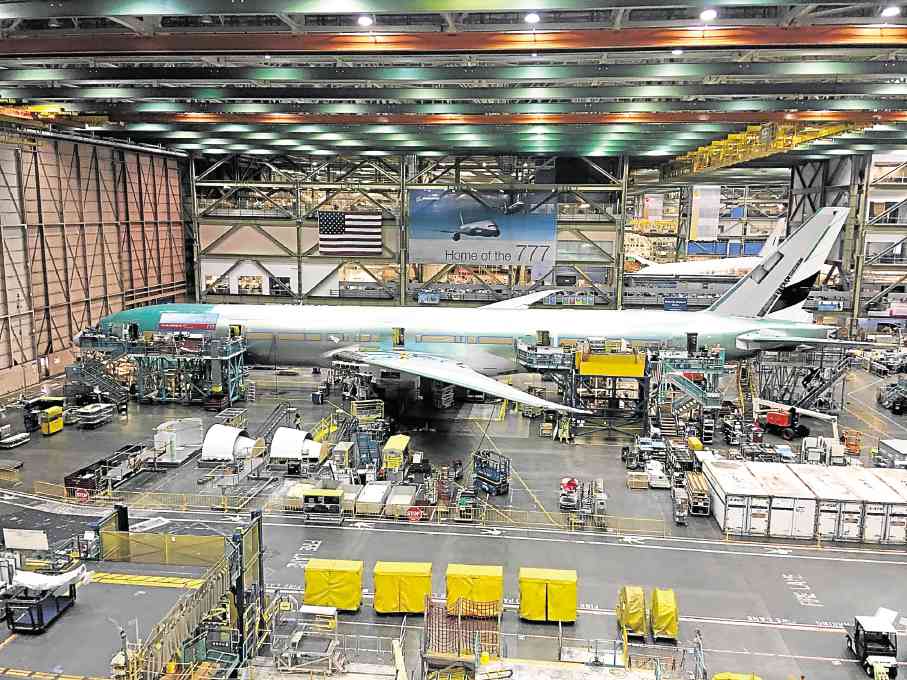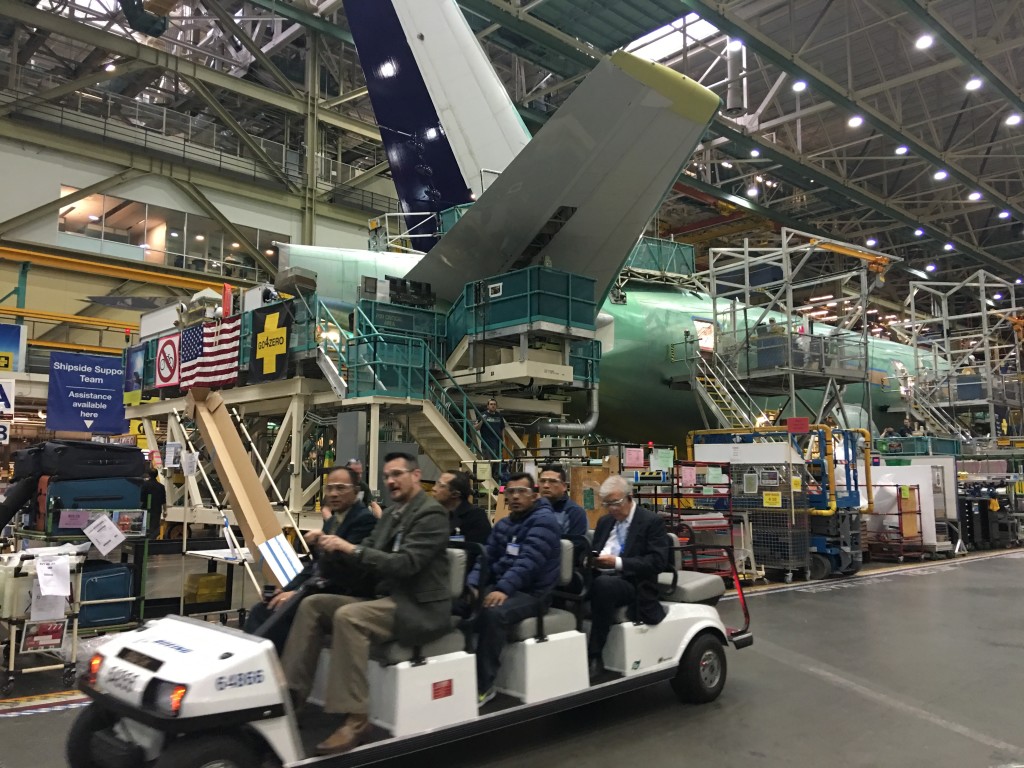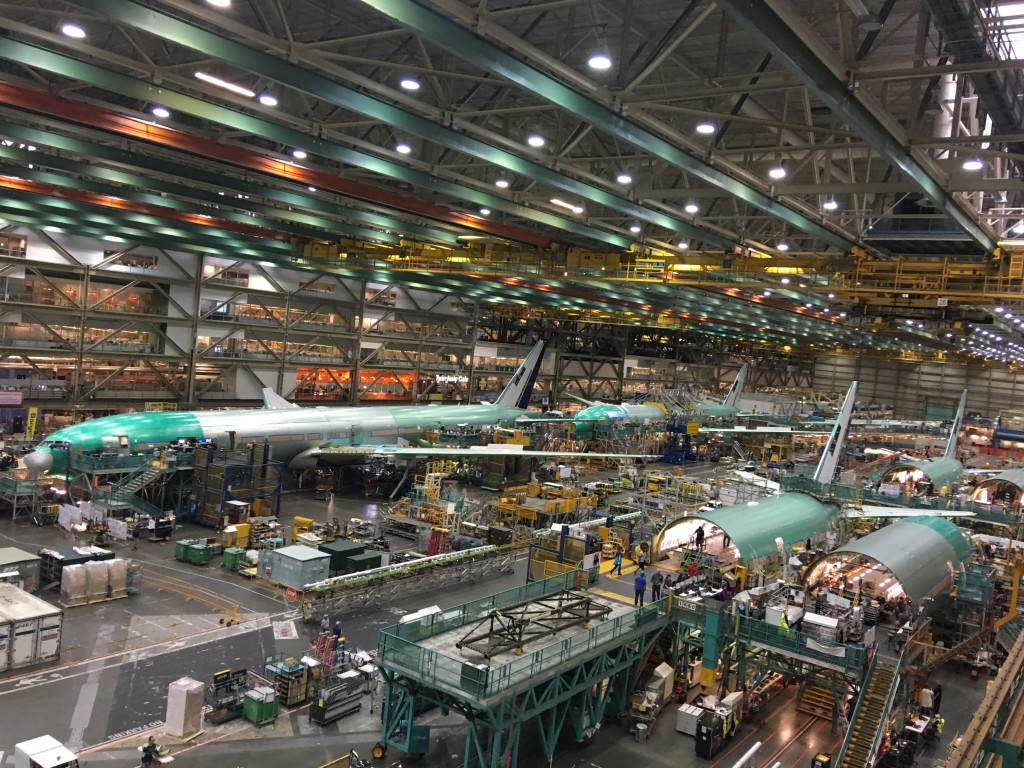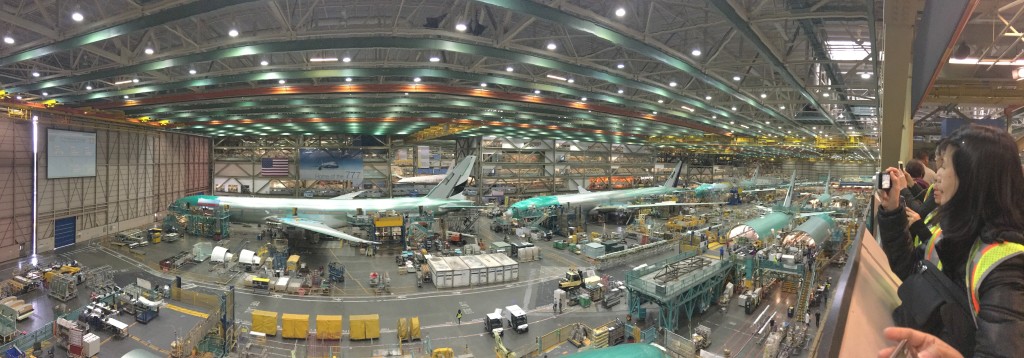PH pitches in to build giant plane
EVERETT, Washington— If it takes a village to raise a child, it takes 40 countries to build an aircraft.
At least for Boeing, the world’s biggest aerospace company, its commercial planes are a global enterprise with parts manufactured in 40 countries including the Philippines.
Boeing spends $45 billion a year buying one billion parts from 5,400 suppliers from Europe, Africa, the Middle East, Asia and all US states.
Five manufacturers in the Philippines are part of Boeing’s global supply link, producing components for flight controls and other precision-machined parts, galley panels and lavatory modular systems.
Boeing wide-body planes like the 747 (dubbed “Queen of the Skies”), 777 (known as the “Worldliner”) and 787 (or “Dreamliner”), come together in a mammoth 415-hectare plant in Everett, 48 kilometers north of Seattle.
Within the Everett site is the main factory, where Philippine Airlines’ latest 777-300ER (extended range) was made. The factory, 40 hectares wide and 3.5 kms long, can fit 911 NBA basketball courts. It was certified in the Guinness World Records as the biggest manufacturing building in the world by volume.
The building does not use air-conditioning or heating. In the winter, they keep it warm through the heat from the machinery, the workers and residual lights from one million bulbs in the ceiling. In the summer, they simply open the doors. The hub also collects storm water in engineered ponds, the largest of which can hold 75 million liters of water, enough to float a ship.
Everett uses a private runway, the 9,000-foot Paine Field, where all those huge planes take off every day for delivery to some 60 airlines all over the world. That’s 3,600 of the different Boeing models delivered to date.
It takes 46 days to put together a 777, and 100 of this model—said to be the most popular plane of all time—are made here every month. All in all, two planes roll out of the factory each day.
The Boeing Everett Site is a popular tourist attraction visited by 330,000 people each year, paying $20 each.
With 40,000 employees working in three shifts, Boeing is the biggest employer of Seattle, where its founder William Boeing started his company 100 years ago.
On our tour of the Everett factory last Oct. 28, there were eight 777s and 787s in the assembly line. To imagine how big the factory is, consider that a 777 is 242-feet long and as wide as two football fields.
An amazing showcase of advanced precision engineering, cutting-edge technology and First World production greeted us as we were escorted around the factory, where the aircraft were in various states of assembly.
The production line is where the various sections of the planes are assembled, joined and fitted with all the electrical and systems installations, interiors, engine and landing gears. The planes are built upside down.
Aside from the sight of the megaplanes being assembled, one is drawn to the whizzing overhead cranes on the 114-feet tall building used to lift the millions of plane parts.
We were told there were 26 overhead cranes cruising on 72 kms of networked tracks, with each crane capable of lifting 40 tons of materials. On the floor, more than 100 forklifts are running with their loads. The site has a 3,000-square meter rail building where the parts are unloaded and moved by 15 rail cars every day.
Hundreds of crates are filled with seats, lavatories and other interior parts brought up to the plane by special elevators.
A 777, the world’s largest twin-aisle plane that can fly halfway around the world non-stop, has three million parts. Boeing’s biggest plane, the 747, has six million parts.
While a 777 typically can have 396 seats, the final configuration—as well as the choice of interior design—is up to the airline that ordered the plane. In the case of PAL, it configured its new 777 with 370 seats: 42 in the business class and 328 in the economy.
The engine, the plane’s most expensive and most important part, is installed last. The choice of engine is also up to the airline—it can choose between GE and Rolls-Royce.
When we visited, the 777s were being painted green, the protective paint against corrosion and scratches. On the other side of the factory was the assembly line for the 787s, which were being painted with the white primer.
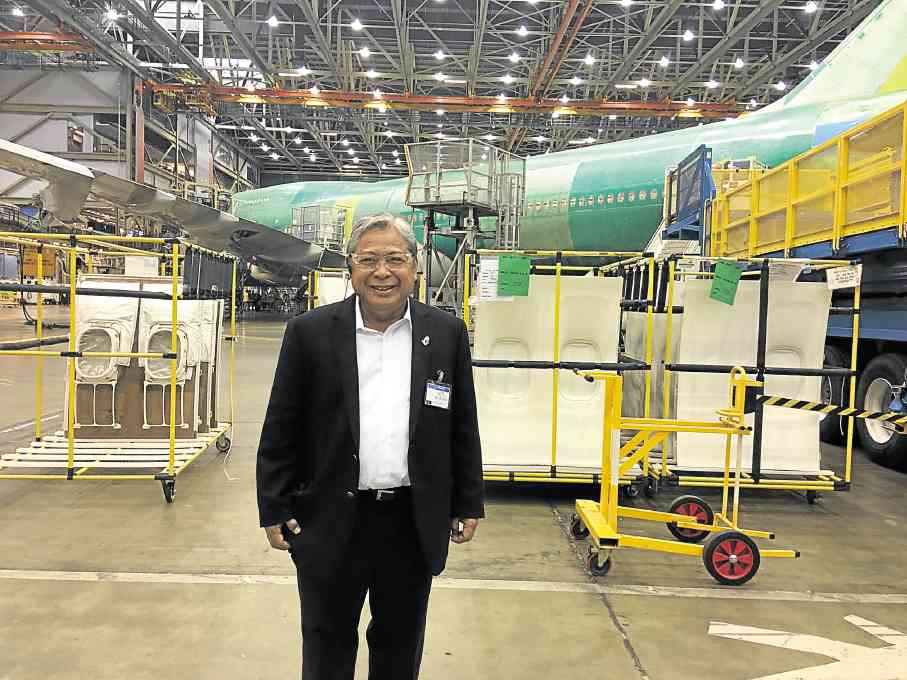
Philippine Airlines president and COO Jaime Bautista at the Boeing factory in Everett, Washington. Photo by Juliet Labog-Javellana
Outside the factory is a big paint hangar building, where it takes a week to paint a plane in the colors of the airline. A 777 uses 416 liters of paint, which adds more than 500 kilos to the plane’s weight.
When the painting is done, Boeing makes the mandatory flight tests before the plane is delivered to its new owner.
At the Boeing Customer Experience Center in Renton, customers see the mock up of the new 7-series planes, marvel on the latest aviation engineering and innovation and can try landing a plane at the flight simulator. At the Museum of Flight in Red Barn, visitors can journey through time in the same building where Boeing started in 1916.
While Boeing employs thousands of engineers, the company hires even high school graduates. All they need is 12 weeks of training and they are good to go.
While traditional manufacturing tools are still in use, Boeing now uses more robotic engineering in the making of the latest aircraft. The 777, we were told, was the first plane to be designed wholly using 3D computer graphics.
For a plane that costs around $300 million apiece and transports millions of people across the globe, that’s just pretty amazing.
